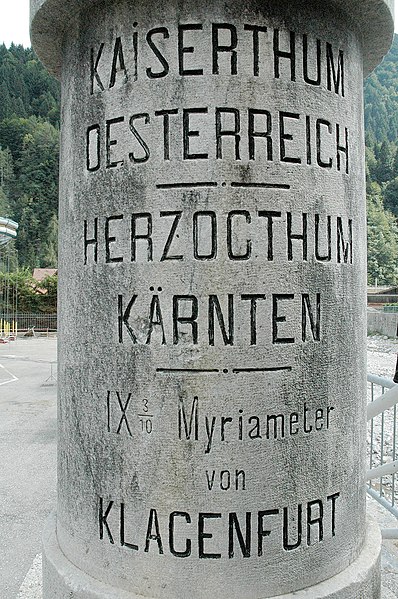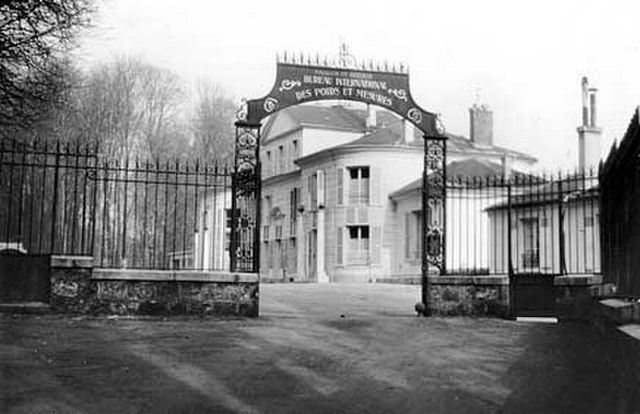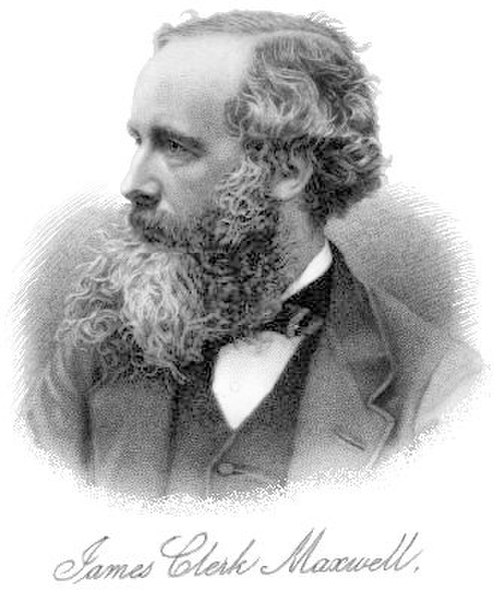International System of Units
The International System of Units, internationally known by the abbreviation SI, is the modern form of the metric system and the world's most widely used system of measurement. Coordinated by the International Bureau of Weights and Measures it is the only system of measurement with an official status in nearly every country in the world, employed in science, technology, industry, and everyday commerce.
Silicon sphere for the Avogadro project used for measuring the Avogadro constant to a relative standard uncertainty of 2×10−8 or less, held by Achim Leistner
Stone marking the Austro-Hungarian/Italian border at Pontebba displaying myriametres, a unit of 10 km used in Central Europe in the 19th century (but since deprecated)
Closeup of the National Prototype Metre, serial number 27, allocated to the United States
The metric system is a decimal-based system of measurement. The current international standard for the metric system is the International System of Units, in which all units can be expressed in terms of seven base units: the metre, kilogram, second, ampere, kelvin, mole, and candela.
A kilogram mass and three metric measuring devices: a tape measure in centimetres, a thermometer in degrees Celsius, and a multimeter that measures potential in volts, current in amperes and resistance in ohms.
Pavillon de Breteuil, Saint-Cloud, France, the home of the metric system since 1875
James Clerk Maxwell played a major role in developing the concept of a coherent CGS system and in extending the metric system to include electrical units.





